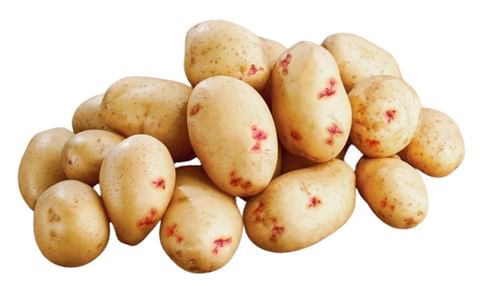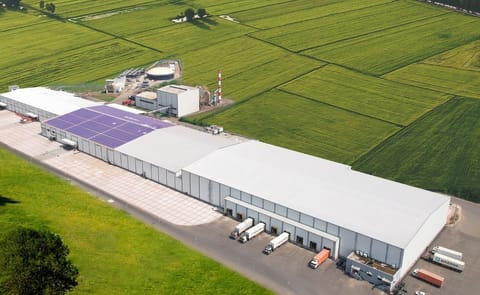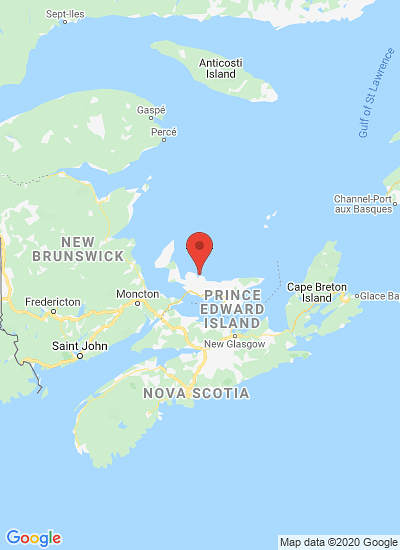The potato crop in Canada is in varying stages - from emergence to touching between rows. Potato growers everywhere are optimistic for the good growing conditions needed to move this crop in its early life stages. At this point the weather can be characterized by hot and dry from Manitoba west and wetter from Ontario east.
Here is a summary of how the crop looks across the country:
Prince Edward Island:
The island has experienced some different weather since planting, with the western end receiving up to 50 mm last weekend and sporadic rains hitting the central area with 5 mm to 13 mm depending on the fields; the eastern part of the island would be the driest at this point.
Despite seeing over 200 mm of precipitation in June alone, growing conditions have generally been decent and the crop is in good shape, however the heavy rains recently have delayed spraying in certain areas.
Old crop is in good supply and moving well. Overall planted acreage on the island is expected to be up slightly, perhaps 1,300 acres, mostly in processing and some fresh.
New Brunswick:
The crop went in almost 2 weeks ahead of “normal” with some growers reporting their finishing date in 2023 to be ahead of their starting date last year. Emergence has been good and although conditions have been wetter in recent weeks they are not yet affecting the growth of the crop.
With lower stocks than previous years at this time it may be tight through transition with fresh inventories done by the third week of July and new crop coming on a week or two later. Fresh quality depends on the lot as it nears the end of storage season.
Fresh prices have been steady with upward movement driven by increased count carton prices in the US. Planted acreage for New Brunswick is predicted to be flat for this season.
Quebec:
It was a much better spring this year in Quebec with almost ideal conditions for planting and emergence. Recent heavy rainstorms had some growers concerned however current hot and sunny weather should help dry up some of the soaked fields.
Old crop has tightened up in the last few weeks due to increased demand and should allow for perfect timing as old crop transitions to the new one. Expectations are that loose skinned round whites should be starting mid-July with yellows following end July and reds the first or second week of August.
Overall growers are happy about the crop so far. Acreage is expected to be down in chip but up in frozen on the processing side and fairly flat in both table and seed.
Ontario:
Spring came early with warm temperatures allowing for ideal planting conditions. Some of the potatoes planted were touched by frost very early in May, but were not seriously damaged and have since recovered.
The crop overall looks very good; heavy thunderstorms did pass through in the last week but weather has since turned hot and sunny; continued smoke from the forest fires is affecting the province right down into the city of Toronto. Old crop inventories are below 3 year averages and will be tight right up to new crop deliveries. Acreage is expected to be flat this year.
Manitoba:
The province seemed to miss spring altogether, going from very cold temperatures to suddenly very warm and although planting started a bit later than normal the crop quickly caught up. Overall acreage for Fresh potatoes may be up slightly and the trend of moving from reds to yellows will continue.
Old crop red potatoes had been long at the start of the year, but demand picked up substantially in the last two months and will clean up nicely before new crop comes on. Processing potatoes are also being impacted by the heat being experienced in Manitoba this year with crops struggling for moisture and even some burnt sprouts mid-June.
Water limitation continues to be an issue for the province and may challenge yield potential but more importantly hampers expansion, keeping planted acreage fairly flat to last year. Old crop holdings are well below the 3 year average and potatoes will continue to be imported into the province as we move through transition to new crop.
Saskatchewan:
Growers experienced a late, and wet, start to planting but have had excellent growing weather since and the crop has now caught up. Although they have not received much precipitation in the last month, similar to neighbouring provinces, they are very well irrigated.
The province is expected to show the biggest increase in planted acreage by percentage with some predicting up to 2000 more acres, mostly in fresh and seed, although the province is starting to see some interest for processing acres.
Alberta:
Planting was completed in good time this year and subsequent emergence has been even with strong plants. However, it has been extremely dry and very hot in the province, with forest fires raging since May.
Alberta is not as reliant as other provinces on reservoirs to source water for irrigation, so should have adequate water supply for the processing region, although growers have been busy staying ahead of the crop needs.
The seed crop traditionally planted a bit later in the northern area of the province is coming along well. Old crop as of June 1st was above average so stocks should hold out well until new crop is ready.
British Columbia:
BC had a good spring with great planting conditions. Growing conditions have been decent since with many fields now flowering and rows are closing but it has been very dry with little to no rain in 2 months.
The Fraser River, which feeds the crops, is normally available until early August however with low snowpack this year there are concerns about a lack of fresh water in the river and supply may be lost in mid-July, impacting some of the fields that are only about 6" high as of early July.
The first early Warba’s were on sale in the market in early June which was good timing as old crop was pretty much gone at that point. Planted acreage in the province is expected to go up perhaps 200-500 acres.
Solapas principales
United Potato Growers of Canada (UPGC) crop update per July 6, 2023: Optimism everywhere

¿Te gustaría recibir noticias como esta por correo electrónico? ¡Únete y suscríbete!
Get the latest potato industry news straight to your WhatsApp. Join the PotatoPro WhatsApp Community!
Empresa Destacada
Variedades de papa mencionadas
Contenido Patrocinado
Contenido Patrocinado
Contenido Patrocinado
Contenido Patrocinado











